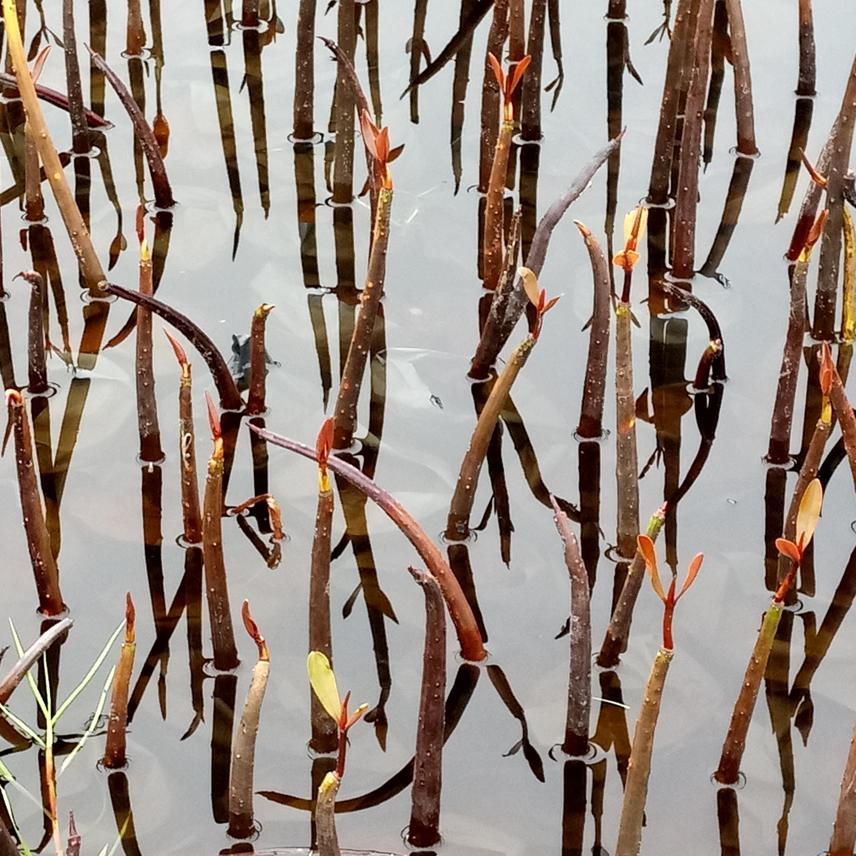Corine Bitossessi Laurenda Sinsin
Given the "endangered nature" of mangrove ecosystems, the particular conservation care they are currently benefiting in Benin Republic, their degraded status, and their promising path for local development in Benin, this project is initiated to provide detailed scientific information on the effect of salinity on the growth of main plant species from the ecosystems, to build capacity of surrounding communities on the importance and conservation techniques of these species and to participatory restore a part of degraded
mangrove sites.

Obtained seedlings of R. racemosa.
Mangroves are crucial wetland ecosystems mainly made of shrubs and trees with ecological optimum similar to marine and estuaries conditions. They play key roles in ecological, social and economic stability yet they are highly threatened and have even been classified “endangered ecosystems” (Duke & Schmitt, 2012). It is important for stakeholders to design sustainable management plan. Meanwhile, designing good and realistic conservation/ management plans most often requires detailed and clear knowledge on state and the functioning of the system (Maxted & Kell, 2009). Entitled “Ecophysiological test and vulnerability assessment of mangroves to inform their restoration in Benin” our project seeks first to provide a clarified map of mangrove of mangrove distribution in Benin, define national conservation status of Rizophora racemosa and Avicenia germinens in Benin, provide credible information on the effect of salinity on the the growth of R. racemosa and A. germinens, provide a guideline for mangroves’ restoration, and last but not the least restore 10 ha of highly degraded mangrove sites in Benin.
Planned over 18 months, project activities include a prospection for mapping sites, in-situ and ex-situ research experiments, sensitization, training, participative mapping, and restoration activities and involve communities at all stages.
i) Ecophysiological test will consist on studying the effect of salinity on sapling and growth of R. racemosa and A. germinans. It will consist on both controlled and uncontrolled experiments for 12 months from July 2018 to July 2019
ii) Senstization and training of nursereysts and local population on propagation and restoration of mangroves. To that end, a technical sheet will be produced on the ecological needs and propagation requirements of selected species. Afterwards, volunteers will be selected in the communities and trained on advanced nursery techniques of concerned species. Also, awareness and sensitization activities will be implemented in schools and communities. This is planned over 30 days from July 2019 to August 2019.
iii) Restoration of a part of mangroves. First we will conduct a participative mapping of degraded mangrove sites. Second we will prioritize sites to be restored. Thus we will proceed to the delimitation of areas within the priority sites and evaluate the level of degradation and species to be restored. Finally we will produce mangrove seedlings with the help of people trained for nursery. The whole activity is to be done in 5 months from August 2019 till January 2020.